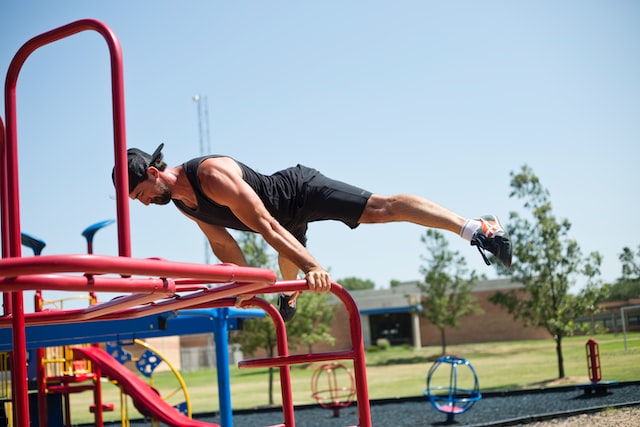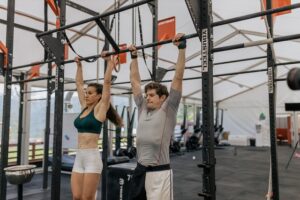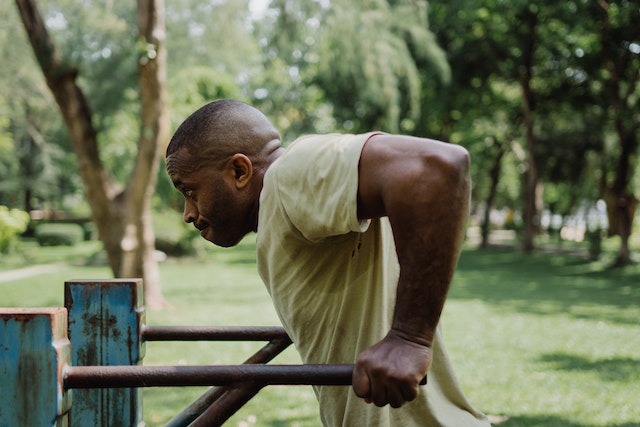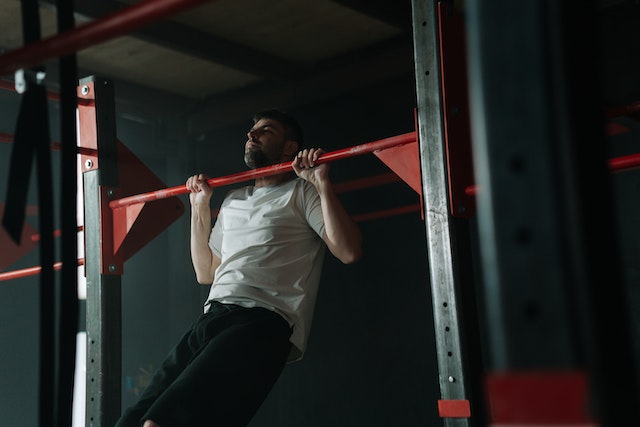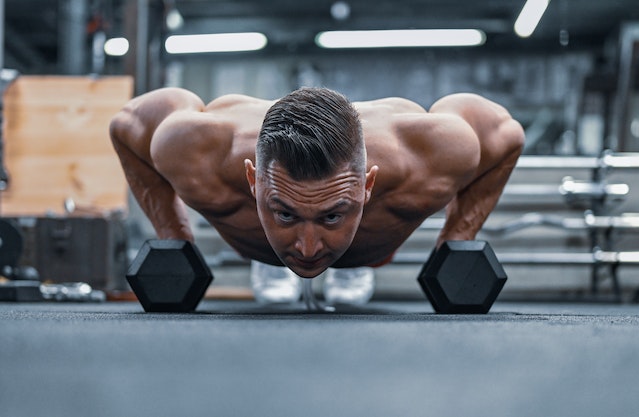Are you ready to take your calisthenics skills to the next level? Look no further than the straddle planche! This challenging exercise is a true test of upper body and core strength, balance, and control. However, mastering the straddle planche requires proper progression and patience. If you’re looking to unlock this impressive move, you need to start with the basics and work your way up gradually.
In this article, we’ll take you through the best progression exercises to help you unlock the straddle planche. We’ll explain the importance of proper form and consistency, as well as provide tips for overcoming common challenges along the way. Get ready to sweat, strain, and maybe even struggle a little as we dive into the world of straddle planche progression. But don’t worry – with the right guidance and attitude, you’ll be well on your way to nailing this impressive calisthenics feat.
Understanding the Basics of the Planche
Before diving into the straddle planche progression, it’s important to have a solid understanding of the planche itself. The planche is a gymnastics and calisthenics move that involves holding your body in a horizontal position, parallel to the ground, with only your hands in contact with the surface. There are different variations of the planche, including the straight planche, tuck planche, and advanced tuck planche, all of which require increasing levels of strength and skill.
To perform the planche, you need a strong upper body, especially in the shoulders, triceps, and chest, as well as a stable and engaged core. Other muscles involved in the planche include the forearms, biceps, lats, and lower back. With consistent practice and proper progression, you can build significant strength and control in these muscles, which can translate to other areas of your fitness routine.
There are several benefits to mastering the planche, beyond just the bragging rights that come with pulling off such a challenging exercise. The planche can help improve your body awareness and proprioception, as well as your overall balance and coordination. It can also enhance your grip strength and wrist mobility, both of which are important in a variety of fitness activities. And of course, mastering the planche can boost your confidence and give you a sense of achievement, which can be highly motivating to continue pushing yourself in your fitness journey.
Straddle Planche Progression
To work your way up to the straddle planche, you need to follow a structured and progressive training plan. The progression involves a series of exercises that gradually build the strength, balance, and control needed for the full straddle planche. Here’s an overview of the different stages of progression:
- Basic exercises: Before attempting the straddle planche, it’s important to have a strong foundation in basic bodyweight exercises such as push-ups, dips, and core exercises like planks and hollow body holds.
- Planche leans: This exercise involves leaning forward with your feet on the ground, with your hands positioned behind you in a planche position. This helps build the shoulder and tricep strength needed for the planche.
- Tuck planche: In this progression, you lift your feet off the ground and bring your knees towards your chest, while holding the planche position. This helps you work on engaging your core and stabilizing your body in a horizontal position.
- Advanced tuck planche: Similar to the tuck planche, but with straighter legs and a more horizontal body position. This progression requires more upper body and core strength, as well as balance and control.
- Straddle planche: The final progression, where you open your legs into a straddle position while maintaining the planche position. This requires significant strength and control, as well as flexibility and balance.
It’s important to note that progress is not linear and you may find yourself returning to earlier progressions at times. Here is a detailed description of each progression
Key points to focus on and common mistakes to avoid:
- Planche leans: Keep your elbows straight and engage your shoulders, squeezing your shoulder blades together. Avoid leaning too far forward, which can strain your wrists and shoulders.
- Tuck planche: Focus on keeping your hips lifted and your core engaged, and avoid rounding your back or dropping your hips. Keep your shoulders down and away from your ears.
- Advanced tuck planche: Aim to maintain a straight line from your shoulders to your feet, and avoid sagging your hips or arching your back. Engage your glutes and quads to lift your legs higher.
- Straddle planche: Keep your legs straight and your hips lifted, engaging your core and glutes. Focus on keeping your arms straight and your shoulders engaged, without letting them shrug up towards your ears.
It’s important to practice consistently and progressively over time, gradually increasing the difficulty and intensity of each progression. Remember to listen to your body and avoid overtraining or pushing yourself too hard too quickly, as this can lead to injury or burnout. With patience and persistence, you’ll be on your way to unlocking the straddle planche in no time!
Common Challenges and How to Overcome Them
Training for the straddle planche can be a challenging journey, and it’s common to encounter a few roadblocks along the way. Here are some common issues and difficulties that people face when training for the straddle planche, along with solutions and tips to help overcome them:
- Lack of upper body strength: If you’re struggling to hold the planche position for even a few seconds, it’s likely that your upper body strength needs improvement. To overcome this challenge, focus on exercises that target your shoulders, triceps, and chest, such as push-ups, dips, and shoulder presses. Incorporating resistance training with weights or resistance bands can also help you build strength more quickly.
- Inadequate core engagement: The planche requires significant core strength and stabilization, and many people struggle with keeping their core engaged throughout the entire movement. To overcome this challenge, focus on exercises that target your abs and lower back, such as planks, hollow body holds, and leg lifts. Practicing proper form and engaging your core during every stage of the planche progression is also crucial.
- Poor wrist mobility: The planche puts a lot of stress on your wrists, and if you have poor wrist mobility or strength, you may struggle with holding the planche position comfortably. To overcome this challenge, focus on exercises that target your wrists, such as wrist curls and wrist extensions. You can also incorporate wrist stretches and warm-ups before your planche training, as well as using parallettes or other hand grip equipment to ease the pressure on your wrists.
- Struggling with progression: It’s common to hit a plateau or struggle with progressing to the next stage of the planche progression. If you find yourself stuck, try adjusting your training plan by adding in new exercises or variations, increasing your training volume or frequency, or taking a break and focusing on other areas of your fitness. Additionally, seeking feedback from a qualified coach or trainer can help you identify areas for improvement and overcome any sticking points.
- Mental barriers: Finally, the planche can be a daunting exercise that can trigger mental barriers and self-doubt. To overcome this challenge, focus on practicing proper form and technique, setting achievable goals, and celebrating your progress along the way. Visualizing yourself successfully performing the planche and reminding yourself of your past achievements can also help boost your confidence and motivation.
Remember, overcoming these challenges takes time and patience, and it’s important to stay consistent and committed to your training. By incorporating proper form, adjusting your training plan, and incorporating different exercises, you can overcome any challenge and unlock the straddle planche.
Tips for Successful Straddle Planche Training
To maximize your progress and get the most out of your straddle planche training, it’s important to incorporate some practical tips and strategies. Here are some tips to help you achieve your straddle planche goals:
- Warm up properly: Before you start your straddle planche training, it’s important to warm up your body and get your blood flowing. Incorporate dynamic stretching and low-impact exercises to increase your heart rate and warm up your muscles. This can help reduce the risk of injury and improve your overall performance.
- Focus on technique over reps: When training for the straddle planche, it’s tempting to focus solely on the number of reps you can perform. However, technique is crucial for mastering this challenging exercise. Focus on proper form and engaging the right muscles throughout each stage of the progression, rather than simply trying to complete as many reps as possible.
- Track your progress: Keeping track of your progress can help you stay motivated and see how far you’ve come. Keep a training log, take videos of your training sessions, or use an app to track your progress over time. Celebrate your achievements and set new goals for yourself to keep pushing forward.
- Take breaks and listen to your body: It’s important to take breaks and listen to your body to avoid burnout or injury. Incorporate rest days into your training plan, and don’t push yourself too hard too quickly. If you feel pain or discomfort, take a break and reassess your training plan. Remember, progress takes time and consistency, and it’s important to prioritize your health and safety.
- Incorporate variety: Adding variety to your training can help prevent boredom and stimulate your muscles in new ways. Try different exercises and variations of the straddle planche progression, such as tuck planches or one-arm planches. Incorporating other types of training, such as cardio or mobility work, can also help improve your overall fitness and support your planche goals.
By incorporating these tips into your straddle planche training, you can stay motivated, focused, and injury-free as you work towards mastering this challenging exercise. Remember to stay patient, consistent, and committed to your training, and don’t forget to celebrate your progress along the way!
Final Thoughts
Congratulations! You’ve made it to the end of our guide to unlocking the straddle planche. By now, you should have a solid understanding of the basic principles behind the planche and its progressions, as well as the challenges and tips for achieving this challenging exercise.
Remember, the straddle planche is a difficult move that requires patience, consistency, and hard work to master. But with the right mindset, techniques, and training, you can achieve this impressive feat and take your calisthenics skills to the next level.
Whether you’re a beginner just starting out or an experienced athlete looking to push yourself further, we hope that this guide has provided you with valuable insights, tips, and inspiration for unlocking the straddle planche. So, grab your mat, start training, and get ready to take your fitness to new heights!
